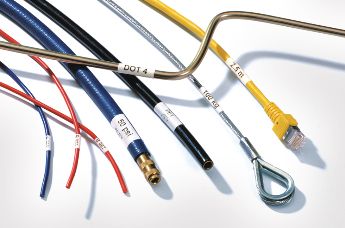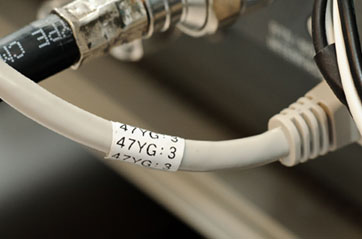How to Make a Cable Labeling
When you label each cable, these cable tags can help you save troubleshooting time, and save a lot of installation time and cost when moving, adding, and changing to the system. This is a tedious and time-consuming thing, but as long as you have time and patience, you can do it easily. However, many engineers do not know how to make a cable marker correctly. This article will introduce how to make cable labeling in detail.
Introduction of Cable Schedule Design and Cable Identification
You can prepare a schedule before installing cables, this schedule can help you to record what kind of cables are needed and where the cable is to be installed. In addition to verifying that everything has already been installed and tested by who and when to install it during installation, you can also indicate the category of cables and termination when they are replaced or updated later.
In a network cable numbering system, each cable has an independent ID. it doesn't matter what the ID is. There can be any number or letter on it. As long as you can understand it, it's best to have a unified code and let others understand it. The following is some advice about how to make network cable label tags.
Don't write all the information on the label. You need to try to abbreviate it, such as "C '' for 'cable'. An excellent network cable numbering system usually expresses the most accurate information on each label with the shortest ID.
Make each of your tags unique. Each of your cable label tags should have a unique meaning, ensuring that your naming and numbering system refers to the same information in your data center labeling standard. Don't mix the numbers and letters on cable markers, to ensure that your coding system is a logical naming and numbering system, so as to avoid ambiguous labels in a system.
Do not use handwriting wire labels, and try to use printing labels, which will make management more convenient in the future, handwritten labels are easy to damage, and printed labels are easier to read. It's best to use the simplest font, which can also improve management efficiency
Here is an example for the patch cord marker: AB10-17:03AB10-20:05, the ''AB10'' means the cabinet number, the latter number means the panel 17-port 03 and the panel 20-port 05. So this label ID means the cable linked in the cabinet AB10 panel 17-port 03 to the same cabinet panel 20-port 05. Such a label expresses information concisely and accurately.
The Common Types of Cable Marker
Self-laminating wire labels
Self-laminating labels are designed composed of a surface that can write or print and with lamination functions. This ensures the information on the label does not damage by dampness, dirt, sediment, and mechanical abrasion. The self-laminating labels are usually used for flat ribbon cables, and some of them can be used in extreme environments such as high temperatures and outdoor situations. QSFPTEK offers a variety of labels: printable, writable, for high temperature, and others.

Figure 1: Self-laminating wire labels
Heat-Shrink Tubing
The heat-shrink tubing is non-sticky and printable. It can cling to the cables snugly after heating. This label can permanently save information while protecting the cables. The heat-shrinkable sleeve generally adopts a full circle design, and it can provide fast and permanent wire marking. The heat-shrinkable label printer can be used to print clear and readable text on wires and cables for reliable wire identification. Heat-shrinkable tubings are usually used in extreme environments, such as large temperature fluctuations and requiring wear and chemical resistance.

Figure 2: Heat-Shrink Tubing
Wrapped-Around Cable Tags
Wrapped-around cable tags are used for most situations in electrical, telecommunication, and datacom identification. They are generally used for terminated and non-terminated cables. If the cable will become curved or has been curved, it can be well marked. This label can be made of a variety of materials to cope with many different environments and applications.

Figure 3: Wrapped-Around Cable Tags
Stainless Steel Label
This label is made of tough stainless steel material. There is no doubt that it can be competent for all kinds of extreme conditions. Of course, due to the particularity of the label, for many areas that require special industrial identification solutions that can withstand extreme environmental conditions, how to simplify and digitize the identification on the label is also an important topic for engineers.

Figure 4: Stainless Steel Label
How to Improve Cable Labeling Efficiency
With more and more wires in the data center, label management becomes more and more difficult. Then how do engineers improve labeling efficiency?
First of all, the most important thing is to choose a high-quality label, which can prevent subsequent damage to the label and cause management difficulties. A high-quality label will not cause identification damage due to temperature and the environment.
Second, before connecting the wires, put a label on the wires. If you need to terminate a bundle of wires, then you don’t need to label each wire. You only need to label the conductors at both ends of the bundle. This can save a lot of time, and it can also allow other workers to quickly identify the wire. All the preparations before the terminal wire have been done, for example, the wire has been cut to the appropriate length. Remember to use a permanent label.
Third, use a dedicated label printer, so that the content of your label is not easily damaged, and the content on the label is also very clear and easy to identify.
Conclusion
By using the label management system, you can know every wire in your data center very well. You can quickly find out which two ports this cable is used for. After a long time, you can still quickly find the wire you need by cable label instead of forgetting, which can speed up your work efficiency. When your data center is facing upgrading, the cable tag can help you save a lot of time. Selecting the appropriate cable tag can also be used properly in various installation environments. QSFPTEK offers many types of ethernet cable markers. If you need customized labels, please contact our customer service via [email protected].
Note: Part of the content is quoted from https://www.powerandcables.com/










